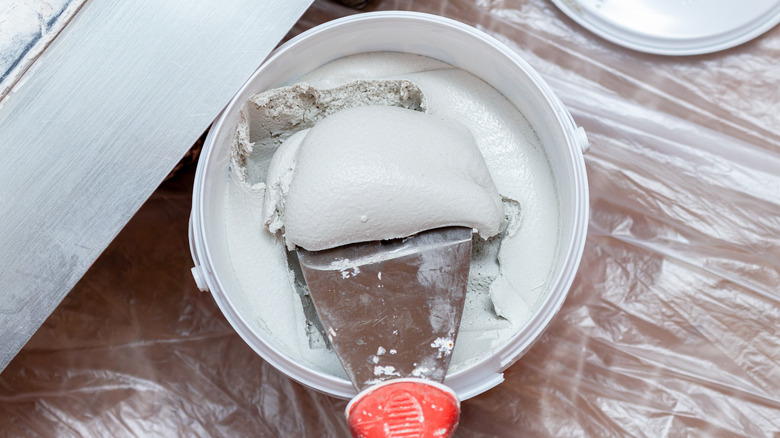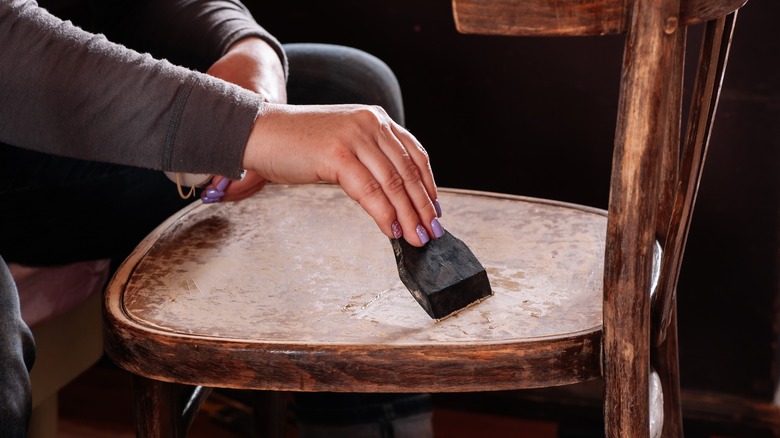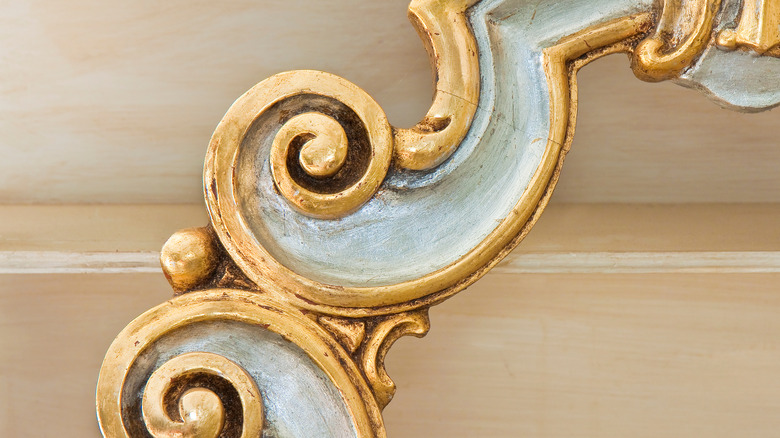The Most Important Place To Use Spackle That You're Probably Missing
If you have ever put a small hole in a wall, then chances are good that you've used spackle to refill it. Similarly, a drywall spackle was most likely your go-to for minor wall patching and filling before starting a painting project. But for all your experience, you might still be missing another important spot where spackle would come in handy for small repairs.
In case you haven't guessed it, your furniture is the answer. Spackle works well for filling in holes and dents, and even for re-attaching broken parts where you would otherwise use wood glue, according to Woodworking Trade. As a matter of fact, spackle has similar advantages to wood filler because of its versatility and fast-drying capabilities. Provided you spread it on in a single smooth coat, you'll be able to paint right over it without having to do much sanding. Moreover, spackle doesn't warp or crack over time, especially if you use a vinyl or exterior spackle for patching outdoor wood furniture.
How to spackle wood
If you're restoring wood furniture that has dents and scratches, spackle proves to be effective in covering these troubled spots. After sanding the surface, you'll simply take a putty knife and spread a thin layer of spackle evenly across the area. From there, wait for the spackle to dry completely. Some projects will require further sanding, but if the area is small, this step may not be necessary. For larger dings or any small bumps that may crop up during the application process, sanding the area down will allow you to achieve a more level surface.
Another recommendation provided by Home Mindset relates to using spackle for filling holes in wood. After a light sanding, use the putty knife to fill the hole completely with spackle, otherwise the compound may fall into the hole if you had only covered the outside. After you fill the hole, apply one more thin layer and smooth out the area. When filling holes, you'll need to allow everything to dry for a longer period before sanding and painting. With any of these types of projects, keep in mind your chosen finish. Spackle tends to work better if you're going to paint the surface rather than stain it.
Using spackle on furniture with mosaic or inlay
Spackle also works for filling in gaps on furniture that has tiles or other decorative accents embedded in the surface. If you have a piece of furniture with small broken pieces of mosaic or inlay, you can fill in those gaps with spackle, explains the DIY bloggers from Young House Love. When you're filling in a hole that was once covered by a now missing tile, one challenge that comes with this task is working with the spackle to match the shape of the surrounding pieces. However, this can be accomplished if you fill the gap completely in a similar manner as filling in a hole. If you're filling in spaces that are shallow but wide or long, you might end up using a second or even a third coat.
Once you have all gaps filled in the furniture and the spackle has thoroughly dried, sand down any rough spots before painting them in a color that matches the rest of the piece. When looking at the furniture piece from afar, you'll barely be able to notice the patchwork repair, especially if the details in the pattern detract from the area.


